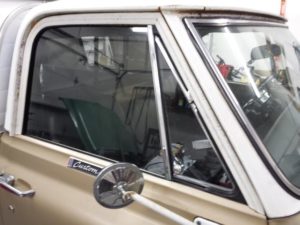
Playing was hard work for us Boomer kids. A typical day would involve creating roads in the grassless dirt under the shade tree with our Tonka bulldozers, creating battlefields for our GI Joes, or perhaps exploring imaginary moonscapes with Major Matt Mason.
All of that activity had one thing in common: wear and tear on your knees. Thus, in short order, our denim blue jeans had holes worn in them that our moms dutifully repaired with iron-on patches. And it was a rare pair of jeans worn by a kid at play of the Eisenhower, Vietnam, or Watergate eras that didn’t have the ubiquitous rectangles secured in place halfway up the legs.
The purchase of a pair of Levi’s was a long-term investment. A new pair of jeans was designated “for school.” That meant the only wear the knees would receive would be on the playground. We didn’t have our Tonkas, GI Joes, or any other dirt toys with us there, so the knees would last perhaps a couple of months.
But sooner or later, the fabric would begin to part directly above a kid’s patella like a miniature Red Sea. The school jeans just became play jeans. And it would be time for mom to trim off the loose threads and apply the patch, which would adhere somewhat firmly with the aid of an iron’s heat.

I say “somewhat,” because what would happen within five or six washings is that the patch would begin to come loose. beginning with one of the upper corners. Kids being kids, it was a supreme test of one’s will to keep from grabbing that curled edge and accelerate the patch’s separation from the pants leg.
If that was to happen, then mom was faced with a decision: do the jeans rate the application of an additional patch, or do they become cut-offs?
Sometimes, the peeling patch would be reinforced by a set of stitches applied with mom’s sewing machine. But if the jeans were too stained/torn/ugly to repatch, they would be summarily shortened with the aid of a pair of stout scissors for summertime wear. We growing kids had ever-lengthening legs, but our waistlines would generally stay about the same. Oh, for THOSE days!
A Boomer buddy of mine reminded me that many moms out there would go ahead and patch brand-new jeans with iron-on patches. I don’t recall my own mother doing that, though. She was more reactive than proactive, worn-out-knees-wise.
My own kids weren’t as passionate about playing in the dirt as I was. I don’t recall my wife ever applying the patches to their jeans. Perhaps their memories will involve things like the batteries in their light-up tennis shoes dying before the shoes themselves wore out.
We kids of the Boomer generation have our own special sartorial recollection: stiff denim patches on our knees that would extend appreciably the life of an expensive pair of Levi’s.
















